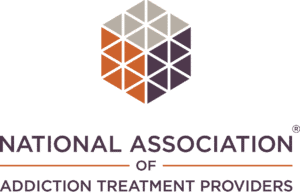Understanding Addiction: Causes, Symptoms, and Treatment
Understanding Addiction
Addiction is a complex condition that affects millions of people around the world, but is sometimes difficult to understand. It is a chronic disease characterized by compulsive drug seeking and use, despite the harmful consequences. Addiction can affect anyone, regardless of age, gender, race, or socioeconomic status.
What Causes Addiction?
The causes of addiction are multifaceted and complex. They can vary from person to person and can include genetic, environmental, and psychological factors. Some of the most common causes of addiction include:
- Genetics: Addiction can be passed down from one generation to another. Research shows that genetic factors can account for up to 50% of the risk for addiction.
- Environment: The environment can also play a role in the development of addiction. Factors such as peer pressure, trauma, stress, and access to drugs can increase the risk of addiction.
- Mental health: People who suffer from mental health disorders such as depression, anxiety, and PTSD are more likely to develop an addiction.
- Early exposure: Early exposure to drugs or alcohol can increase the risk of addiction later in life.
What are the Symptoms of Addiction?
The symptoms of addiction can vary depending on the drug or substance being used. However, some common signs and symptoms of addiction include the following:
- Compulsive drug seeking and use.
- Loss of interest in activities that were once enjoyed.
- Continued drug use despite negative consequences.
- Withdrawal symptoms when drug use is stopped.
- Increased tolerance to drugs, requiring higher doses to achieve the same effects.
- Financial problems due to drug use.
- Neglecting responsibilities at work, school, or home.
- Changes in behavior, mood, and attitude.
What are the Treatment Options for Addiction?
There is no one-size-fits-all approach to treating addiction. The most effective treatment programs are tailored to the individual and address their specific needs. Some common treatment options for addiction include:
- Detoxification: This is the process of removing drugs or alcohol from the body. It is usually the first step in the treatment process and can be done on an outpatient or inpatient basis.
- Inpatient Rehabilitation: Inpatient rehabilitation programs provide a safe, structured environment for people to recover from addiction. These programs typically last for 30 to 90 days and include a combination of individual and group therapy.
- Outpatient Rehabilitation: Outpatient rehabilitation programs allow people to receive treatment while maintaining their daily responsibilities. These programs can be less intensive than inpatient programs and can include individual and group therapy.
- Medication-Assisted Treatment: Medication-assisted treatment (MAT) is a form of treatment that uses medication to help manage the symptoms of withdrawal and reduce the risk of relapse.
- Support Groups: Support groups such as Alcoholics Anonymous (AA) and Narcotics Anonymous (NA) can provide a supportive environment for people in recovery.
Addiction is a complex disease that affects millions of people worldwide. It can be caused by a combination of genetic, environmental, and psychological factors and can have devastating consequences if left untreated. The good news is that addiction is treatable, and recovery is possible. If you or someone you know is struggling with addiction, don’t hesitate to seek help. You can overcome addiction and live a healthy, fulfilling life with the proper treatment and support.
If you or someone you know is struggling with addiction, we encourage you to seek help as soon as possible. Silicon Valley Recovery offers a variety of addiction treatment programs tailored to meet individual needs. Contact us today at 408-478-9365 to learn more about our services and take the first step toward recovery.










